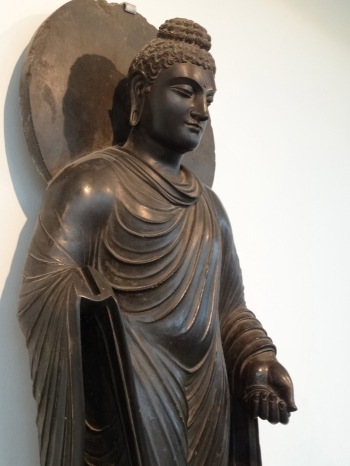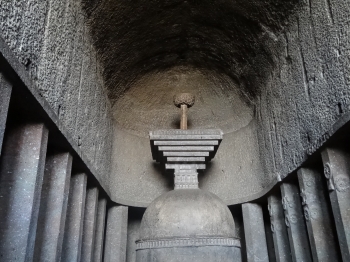Many of you may wonder why Shakyamuni called himself the “Buddha” after his enlightenment. The word “Buddha” comes from the Sanskrit verb “budh” which in the Vedic scriptures means foremostly “to know”, then “to wake up”. Hence the “Buddha” is ‘one who knows’ the dharma or truth. “Buddhism” is a doctrine taught by the Buddha, a doctrine of awakening, insight and understanding.
The Buddha made it known from the very beginning that this awakening can only be acquired by one’s own effort, by the practice of the ‘Way’ – the Noble Eightfold Path, and not by studies or speculations. Liberation, in Buddhism, can only come about through understanding, experience and not by grace or merit.
For many of us, the expressions “Buddha” or “the Buddha” refer to one historical person. This person is known as Siddhartha Gautama, a prince of the Shakya clan who lived in North India in the 6th century B.C. The young prince lived in his palace with every luxury at his command. But once he was confronted with the reality of life and the suffering of mankind, he decided to find the way out of this universal suffering. His determination was so great that soon after the birth of his son Rahula, at the age of 29, he left his kingdom and wandered about the valley of the Ganges, meeting famous religious teachers, studying and following their systems and methods, and submitting himself to rigorous ascetic practices.
But all the efforts were in vain and convinced of the futility of self-mortification, he abandoned all traditional religions and their methods deemed indispensable for deliverance, and went his own way. From personal experience, Gautama realized that neither extreme, self-mortification nor self-indulgence, was the way out of human suffering and he adopted the golden mean, called the Middle Path, which later became one of the salient features of his teaching. It was thus that one evening, seated under a tree (since then known as the bodhi-tree ‘the Tree of Wisdom’) on the bank of the Niranjana at Buddha-Gaya, at the age of 35, Gautama attained Enlightenment, after which he was known as the Buddha, ‘The Enlightened One’.
Regaining his lost strength with some food, Gautama developed the first jhana which he gained in his youth. By degrees he developed the second, third and fourth jhanas. He gained perfect one-pointedness of the mind by developing the jhanas. This state of the mind is like a polished mirror where everything is reflected in its true perspective.
Thus with thoughts tranquillized, purified, free from lust and impurity, alert and steady, he directed his mind to the knowledge regarding reminiscence of past births. He recalled the mode and details of his varied lots in former births in the first watch of the night.
In the second watch of the night, he directed his purified mind to the perception of the disappearing and reappearing of beings, from one state of existence and reappearing in another, all passing according to their deeds.
Dispelling the ignorance regarding the future, he then directed his purified mind to the comprehension of the cessation of corruptions. He realized in accordance with fact : “this is sorrow, this, the arising of sorrow, this, the cessation of sorrow, this, the path leading to the cessation of sorrow.” He realized the origin of dukkha and the truth of conditionality of Dependent Origination. Likewise he realized: “these are the corruptions, this, the arising of corruptions, this, the cessation of corruptions, this, the path leading to the cessation of corruptions.”. As he reflected the law of dependent origination in descending order, he understood the exhaustion of conditions and then his doubts were gone. Thus cognizing, thus perceiving, his mind was delivered from the corruption of sensual craving (kama); from the corruption of craving for existence (bhava); from the corruption of ignorance (avijja); from the corruption of false views (ditthi).
When the Buddha was enlightened, he exclaimed to himself,
Anekajatisamsaram
Sandhavissam anibbisam
Gahakarakam gavesanto
Dukkha jati punappunam
Gahakaraka ditthosi
Puna geham na kahasi
Sabba te phasuka bhagga
Gahakutam visankhitam
Visankharagatam cittam
Tanhanam khayamajjhaga
Translated into English, this means:
I travel in many births, in vain
Searching for a house-builder
Birth again and again is dukkha
O, House-builder, I have seen you today
You’ll never build a house for me again
All new rafters are broken
The ridge-pole of the roof is dissolved
My mind has gone to non-accumulation
I have realized the exhaustion of craving
After his enlightenment, the Buddha delivered his first sermon to a group of five ascetics, his old colleagues, in the Deer Park. From that day, for 45 years, he taught all classes of men and women without making any distinction.
















